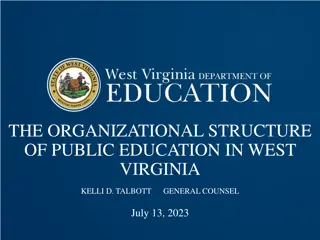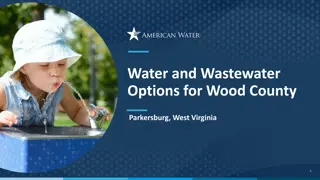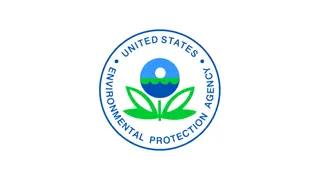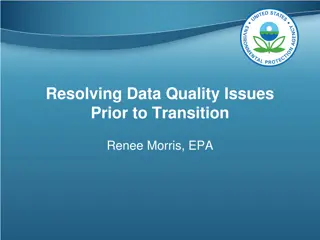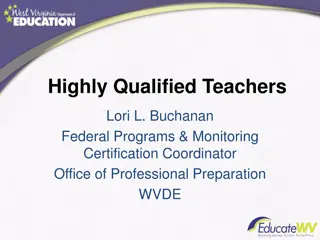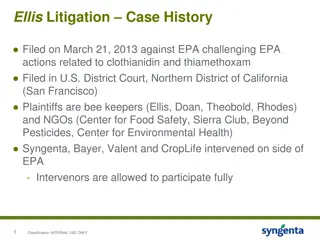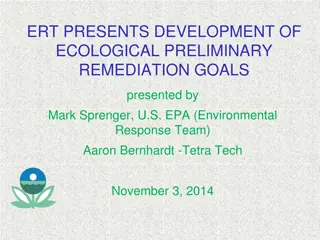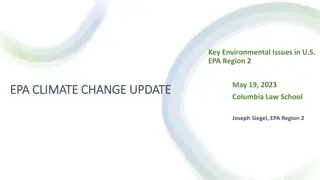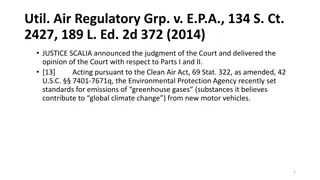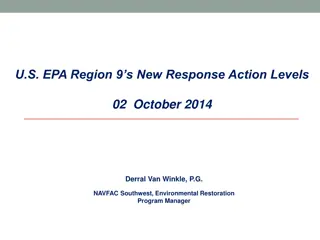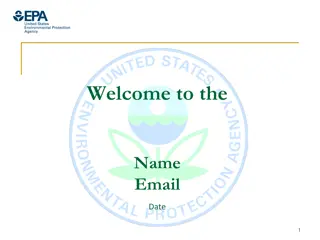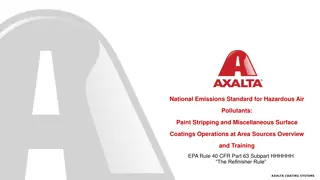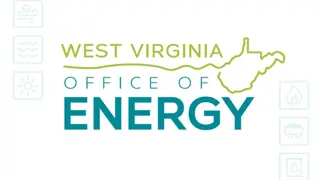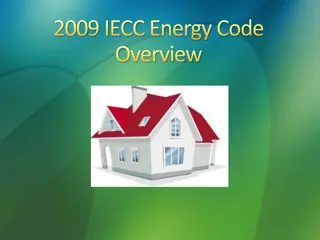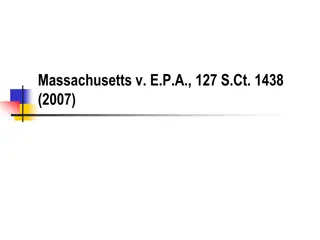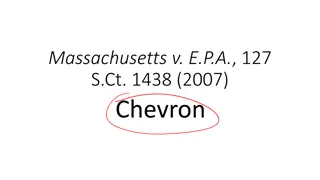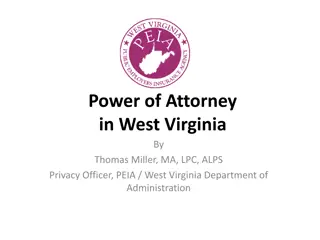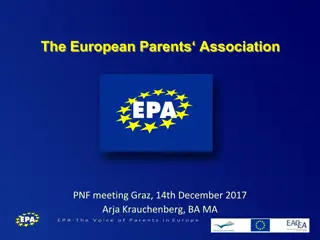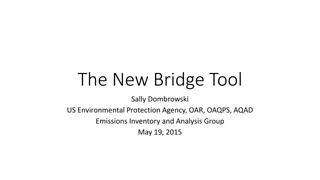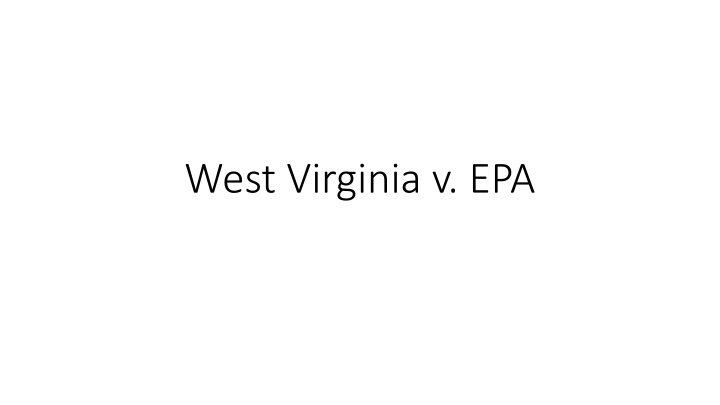
Environmental Regulations and Policies in the United States
Explore the complexities of environmental regulations in the U.S., including legal challenges, the Clean Power Plan, Best Available Control Technology (BACT), and more. Learn about the tradeoffs between industry changes and pollution reduction, and the ongoing debates surrounding the ACE Rule versus the CPP.
Download Presentation

Please find below an Image/Link to download the presentation.
The content on the website is provided AS IS for your information and personal use only. It may not be sold, licensed, or shared on other websites without obtaining consent from the author. If you encounter any issues during the download, it is possible that the publisher has removed the file from their server.
You are allowed to download the files provided on this website for personal or commercial use, subject to the condition that they are used lawfully. All files are the property of their respective owners.
The content on the website is provided AS IS for your information and personal use only. It may not be sold, licensed, or shared on other websites without obtaining consent from the author.
E N D
Presentation Transcript
Does a Majority Support Mass. V. EPA? The UARG Dissent
Two Classes of Pollutants in the CAA Routine The category pollutants Things that are dangerous with very high or chronic exposure but that have exposure levels that are not dangerous. GHGs are in this class Toxic pollutants No safe exposure levels Can be immediately toxic These justify control measures that can change the nature of the industry, either because of the controls needed or their cost.
Tradeoffs in the CAA How much do we want to change industry to reduce pollution?
Best Available Control Technology (BACT) What does this mean generally? What are the limitations on BACT? Contrast with technology forcing standards
BACT for GHGs What could these be? What are the problems? How effective?
The Clean Power Plan Electric power generation Each state had a goal Reduce the overall tonnage of CO2, or Reduce the tons of CO2 per megawatt generated. Fixing coal plants would not do it. Shifting to natural gas in coal heavy states would do it. Low coal states would have to increase nuclear or renewables or increase efficiency. Depended on cheap natural gas doing the job without regulation in high coal states.
Legal Challenges to the CPP Enjoined for all the reasons in American Lung Key challenges The states would have to do things beyond the fence line. The CPP would force a fundamental change in the industry, i.e. shut down coal plants, which goes against the core of the CAA Litigation was still in progress when the Trump administration replaced it when the Affordable Clean Energy Rule. This sets up American Lung, which relitigates the CPP
The ACE Rule Assumes that the CAA only allows inside the fence regulation Assumes that GHGs must be treated the same as other routine pollutants The regulations must be BACT The regulations cannot change the nature of the business. Based on tuning up the coal plants to be more efficient. Very limited reduction in emissions. Total emissions might increase because the plants would be more efficient, i.e., cheaper to run.
The Challenges Challenged by environmental groups for effectively doing nothing. Challenged by coal groups for regulating at all. UARG major questions argument GHG do not fit the CAA 7411 v. 7412 conflict
BACT and Beyond the Fence Did the American Lung Court accept the assumptions of the EPA in the ACE?
Stopped here Play Kavanaugh Clip What is the 7411 v. 7412 Conflict? Can they be harmonized? Must the court harmonize them? Can the court toss the amendments because of the conflict?
What is the Major Questions Challenge? How do you argue this?

